Nikon DX on FX
Oct 2, 2012 03:21:16 #
HarryBinNC
Loc: Blue Ridge Mtns, No.Carolina, USA
Bram boy wrote:
Shure it works but the whole point of having a 12m... (show quote)
Bram boy, what you are missing here is the fact that the 12-24 is an 18-36mm equivalent in 35 mm terms when used on the DX cameras it was "meant for". When I use it on a 35 mm (full-frame) camera, it is fully usable from the 16mm focal length to the long end of 24 mm. So as far as the wide end goes, I can actually get a WIDER angle image when I use the lens on the FX camera. And in my work, I use it mostly at the 18mm setting or lower when I can get away with it. It is a great lens, and I am glad that it has an image circle that is large enough to cover my D700's full-frame 35mm sensor. I am also very happy that I didn't have to part with it as I thought I might when I converted to the larger format. When the lens is used "on the camera it was designed for", it cannot provide anything wider than the 18mm angle of view due to the 1.5x crop factor of Nikon cameras with APS size sensors. So it is not really a "12mm" lens on either the crop sensor camera or the full-frame D700.
Personally, I wish the camera makers/marketers had never started up this convention of always defining lenses in 35mm film camera terms. This was never done in the days of film. Lenses were described by their actual focal lengths, ranges of f-stops and the kind of mounts available for them. Photographers generally knew what all that stuff meant in relation to different cameras and film formats. Now what we have is a lot of confusion resulting in comments like the one made by Bram boy.
In general, serious photographers over the years come across cameras, lenses, and accessories that they really really like and love coming up with new or different ways to use them - this often involves using lenses on cameras that they weren't originally designed for. As a result, we now have a plethora of adapters to put a wide variety of lenses on cameras they were not "made for".
The bottom line for me is that the 12-24 does a great job at the wide end of a set of fine Nikkor lenses covering from 16 to 500mm, and I am very glad I have it.
I have attached a few images that I made with it on a recent job.
Harry
3 shot bedroom pano
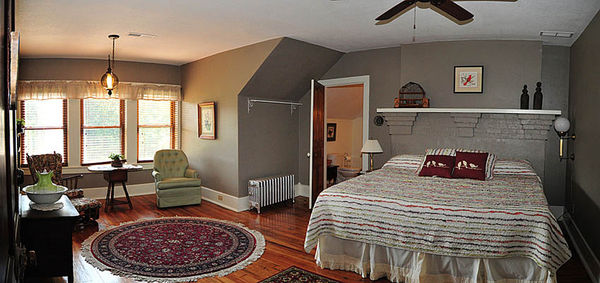
Parlor
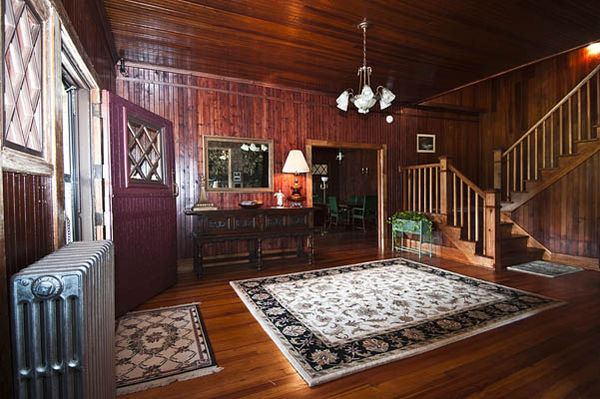
Upstairs
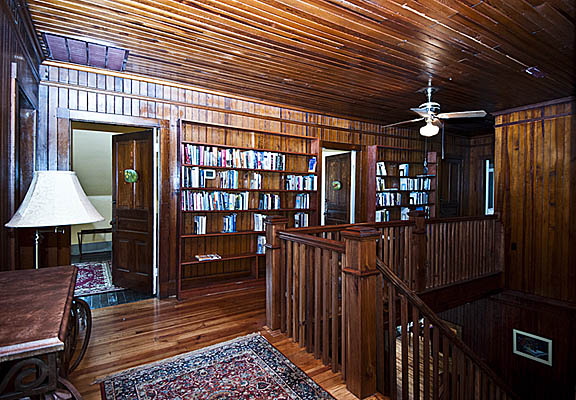
Oct 2, 2012 08:32:31 #
MT Shooter wrote:
The D600 does not provide a port for the MC-30 or MC-36 because it retains the IR ports for use with the ML-L3 wireless remote and adds a GPS port for other add-on functionality.
I do really miss that IR receptor capability on my D800E
Patw28 wrote:
BUT! be advised: the D600 does NOT provide a cable port for remote shutter release or other functions. Why not?!!! (Someone tell me I'm wrong!)
The D600 does not provide a port for the MC-30 or MC-36 because it retains the IR ports for use with the ML-L3 wireless remote and adds a GPS port for other add-on functionality.
I do really miss that IR receptor capability on my D800E
So it doesn't have that "Accessory Terminal" that the D7000 has? I guess that's the difference between the top of the DX cameras and the bottom (so far) of the FX. There is still a D400 to be announced.
Oct 2, 2012 10:38:34 #
Patw28 wrote:
Diagram is wrong. There is no MC-D2 port on the D600.
Diagram is wrong. There is no MC-D2 port on the D600.
I'm surprised they'd screw up something like that in the camera brochure. Do you have one so you are sure?

Oct 2, 2012 10:52:24 #
Reply to: Nikon DX on FX
From rts2568
Yes, an FX does automatically adjust when a DX lens is fitted, but that is the easiest way of explaining it and at the end of the day, is all you need to know about that.
Hi jerryc41, I have discussed this elsewhere in more detail but to nutshell it for you here, a DX lens on a FX body projects less RESOLVING width and height onto the FX sensor, so the image projected that is seen through the FX viewfinder is simply a smaller useable image area than is seen at that time, hence a 1:1 reproduction of the objects in the photos of each, the DX result and the FX results are the same size, given that all else is equal. So you dont understand what Ive written above? Well, you didnt expect it to be easy did you? Read on.
I wish on your behalf that this subject was easy to write out and for those of you who dont yet understand the concept. It seems it isnt, otherwise everyone would understand; so jump on the bandwagon of the learning curve.
In an attempt to simplify it for you here, I have attached a photograph that illustrates your question, to a degree anyway. In a nutshell, the following may explain the basic principles detail. A picture is worth a thousand words, and I might surmise, might be easier to understand. There are many illustrations on the web too, regarding this subject so I strongly advise that you continue your search until you are satisfied you understand enough.
Very broadly speaking, the top image is the FX with its wider subject area, the bottom image is the equivalent crop in the DX result and this is the way to visualize it.
a/ When an FX lens is put onto a FX body, or when a DX lens is put onto a DX body, the top picture will result. The only difference is that the FX gives you a greater enlargement potential, along with a few other benefits. Be clear here though, a good photographer using a DX will produce better results with that DX camera than a lesser photographer using an FX camera.
b/ When a DX lens is put onto an FX body, or when a FX lens is used on a DX camera, it will result in the bottom image.
Now, having said this I have to add that this is only a visualization method to help understand the simpler fact that a DX sensor is smaller than an FX sensor.
In both cases of FX and DX lenses, both project a circular image into the mirror box that exceeds the sensor size; the FX projects a larger circular image however because it is designed to cover the larger sensor dimensions, 24x36mm, so it can cover the DX format very easily. The DX lens in comparison only needs to cover a sensor size of approximately half that and so, when used on a FX body, the FX sensor can only properly resolve to the end image, half of what it is designed to accept from an FX lens.
Try to visualize the smaller (DX) and the larger (FX)s circular projection of light, inside the mirror boxes and soon enough, that inevitable concept you seek will fall into place in your mind.
Beyond this, the answer to the question you have asked gets very complex to most and the answers to these complexities would burst the UHH servers seams if it was all written about here. So, your best bet is to concentrate on the above in the visual context and then, if you still want to learn about focal lengths, angles of view, angles of acceptance, crop factors, megapixels on a DX camera contrasted with megapixels on an FX cameras sensor, benefits of one over the other etc and endlessly etc as discussed on the web pages by specialists and experts, youll find that all of that expertise will keep you in reading entertainment for months but there are other, more important considerations.
DX equipment is lighter and smaller. The FX gear the opposite. If you are contemplating buying new or second hand though, then think seriously about FX, the sensor size that I suggest will become the standard in the near future and despite the weight differences, there is usually very little in it. The FX gear generally is more expensive also and if the price is the limitation for you then stick with DX.
The only really important thing to keep in mind is that, whichever you have or choose to obtain, accept it as equipment that will be capable of producing better results than you are ever likely to lust after, unless you are an expert, a professional or a scientist who can only tolerate the very best for their specialist requirements. Unless you are one of the latter, you, and you alone will more likely be the limiting factor, not the camera sensors size.
Photography is just another one or those trades or professions that use a tool box to achieve a particular result. All of those persons learn to use their tools in the best way and then get on with producing the results. Your camera kit is a box of tools, learn to use those tools, whether they be DX, FX or smaller or for that matter larger, to the best of your ability your ability being the key here and you will be rewarded with a life time of rewarding photography.
Just something for you to contemplate here. I use four different sizes of camera here, one larger than you contemplate or ask about so I wont go into that. The other three, a FX (Full frame), a DX (1/2 frame) and a 1/1.7th of an inch compact. Now my point for you to consider, I have set up examples over some time now for people to guess from the photos I show them, which of these three cameras I took the photos with. No one, literally no one yet has been able to tell until I show them enlargements, side by side and even then, many are still lost. The smallest of these three is in fact, 1/20th the size of the FX format roughly the size of your little finger nail. The primary reason for this failure in those peoples judgments is that the equipment these days is very good. Used properly, all will produce acceptable results. The compact has a lot of limitations but can be used where neither of the others can be used sometimes. The biggest limiting factor with different cameras is and will always be more the photographer, than the gear itself.
There are 14 other images attached for you to consider. See if you can pick out which, is from which camera remember only three to choose from. Im going to have to give you a clue here because of the tiny size they will come down to you, on this UHH site: all print larger than 12x10 inches, although the actual samples here have been printed at the sizes given on them all.
Hope this helps to answer your question. If not, there are many experts out there on the UHH plateau who surely will.
rts2568
jerryc41 wrote:
How exactly does this work? I understand that Nikon FX cameras have a setting (or maybe it's automatic) that adjusts the camera for using a DX lens. What is the final result of using a DX rather than an FX lens of the same focal length? h
From rts2568
Yes, an FX does automatically adjust when a DX lens is fitted, but that is the easiest way of explaining it and at the end of the day, is all you need to know about that.
Hi jerryc41, I have discussed this elsewhere in more detail but to nutshell it for you here, a DX lens on a FX body projects less RESOLVING width and height onto the FX sensor, so the image projected that is seen through the FX viewfinder is simply a smaller useable image area than is seen at that time, hence a 1:1 reproduction of the objects in the photos of each, the DX result and the FX results are the same size, given that all else is equal. So you dont understand what Ive written above? Well, you didnt expect it to be easy did you? Read on.
I wish on your behalf that this subject was easy to write out and for those of you who dont yet understand the concept. It seems it isnt, otherwise everyone would understand; so jump on the bandwagon of the learning curve.
In an attempt to simplify it for you here, I have attached a photograph that illustrates your question, to a degree anyway. In a nutshell, the following may explain the basic principles detail. A picture is worth a thousand words, and I might surmise, might be easier to understand. There are many illustrations on the web too, regarding this subject so I strongly advise that you continue your search until you are satisfied you understand enough.
Very broadly speaking, the top image is the FX with its wider subject area, the bottom image is the equivalent crop in the DX result and this is the way to visualize it.
a/ When an FX lens is put onto a FX body, or when a DX lens is put onto a DX body, the top picture will result. The only difference is that the FX gives you a greater enlargement potential, along with a few other benefits. Be clear here though, a good photographer using a DX will produce better results with that DX camera than a lesser photographer using an FX camera.
b/ When a DX lens is put onto an FX body, or when a FX lens is used on a DX camera, it will result in the bottom image.
Now, having said this I have to add that this is only a visualization method to help understand the simpler fact that a DX sensor is smaller than an FX sensor.
In both cases of FX and DX lenses, both project a circular image into the mirror box that exceeds the sensor size; the FX projects a larger circular image however because it is designed to cover the larger sensor dimensions, 24x36mm, so it can cover the DX format very easily. The DX lens in comparison only needs to cover a sensor size of approximately half that and so, when used on a FX body, the FX sensor can only properly resolve to the end image, half of what it is designed to accept from an FX lens.
Try to visualize the smaller (DX) and the larger (FX)s circular projection of light, inside the mirror boxes and soon enough, that inevitable concept you seek will fall into place in your mind.
Beyond this, the answer to the question you have asked gets very complex to most and the answers to these complexities would burst the UHH servers seams if it was all written about here. So, your best bet is to concentrate on the above in the visual context and then, if you still want to learn about focal lengths, angles of view, angles of acceptance, crop factors, megapixels on a DX camera contrasted with megapixels on an FX cameras sensor, benefits of one over the other etc and endlessly etc as discussed on the web pages by specialists and experts, youll find that all of that expertise will keep you in reading entertainment for months but there are other, more important considerations.
DX equipment is lighter and smaller. The FX gear the opposite. If you are contemplating buying new or second hand though, then think seriously about FX, the sensor size that I suggest will become the standard in the near future and despite the weight differences, there is usually very little in it. The FX gear generally is more expensive also and if the price is the limitation for you then stick with DX.
The only really important thing to keep in mind is that, whichever you have or choose to obtain, accept it as equipment that will be capable of producing better results than you are ever likely to lust after, unless you are an expert, a professional or a scientist who can only tolerate the very best for their specialist requirements. Unless you are one of the latter, you, and you alone will more likely be the limiting factor, not the camera sensors size.
Photography is just another one or those trades or professions that use a tool box to achieve a particular result. All of those persons learn to use their tools in the best way and then get on with producing the results. Your camera kit is a box of tools, learn to use those tools, whether they be DX, FX or smaller or for that matter larger, to the best of your ability your ability being the key here and you will be rewarded with a life time of rewarding photography.
Just something for you to contemplate here. I use four different sizes of camera here, one larger than you contemplate or ask about so I wont go into that. The other three, a FX (Full frame), a DX (1/2 frame) and a 1/1.7th of an inch compact. Now my point for you to consider, I have set up examples over some time now for people to guess from the photos I show them, which of these three cameras I took the photos with. No one, literally no one yet has been able to tell until I show them enlargements, side by side and even then, many are still lost. The smallest of these three is in fact, 1/20th the size of the FX format roughly the size of your little finger nail. The primary reason for this failure in those peoples judgments is that the equipment these days is very good. Used properly, all will produce acceptable results. The compact has a lot of limitations but can be used where neither of the others can be used sometimes. The biggest limiting factor with different cameras is and will always be more the photographer, than the gear itself.
There are 14 other images attached for you to consider. See if you can pick out which, is from which camera remember only three to choose from. Im going to have to give you a clue here because of the tiny size they will come down to you, on this UHH site: all print larger than 12x10 inches, although the actual samples here have been printed at the sizes given on them all.
Hope this helps to answer your question. If not, there are many experts out there on the UHH plateau who surely will.
rts2568
Studio shot
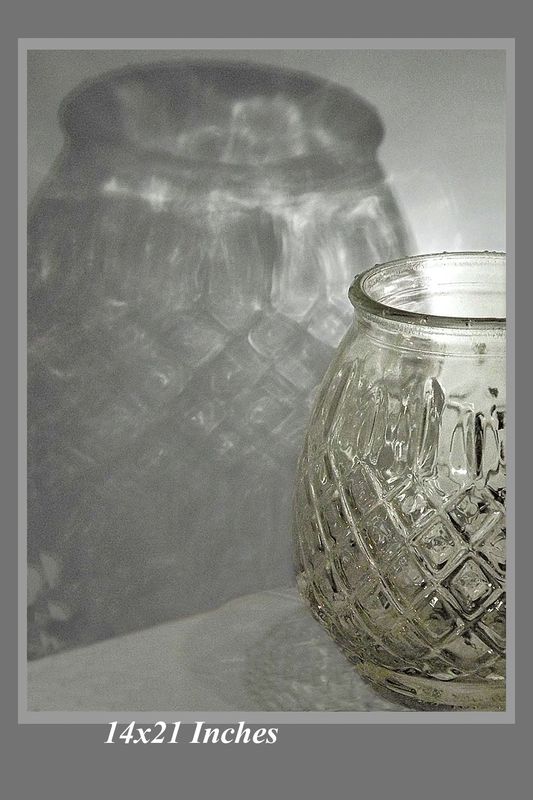
Garden shot handheld

Oct 2, 2012 10:55:38 #
jerryc41 wrote:
How exactly does this work? I understand that Nikon FX cameras have a setting (or maybe it's automatic) that adjusts the camera for using a DX lens. What is the final result of using a DX rather than an FX lens of the same focal length?
2nd set of three from rts2568
Invasion

Passionfruit taken hand hald up a ladder
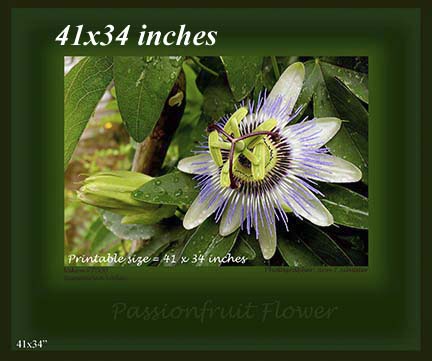
Tele zoom hand held
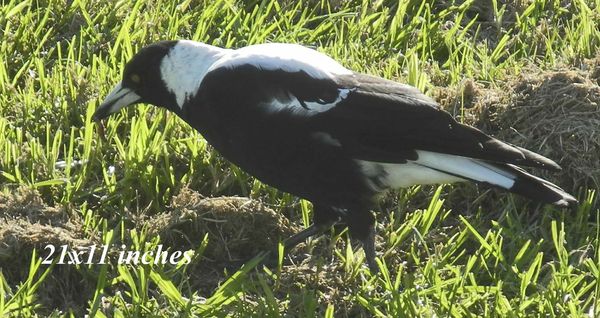
Oct 2, 2012 10:56:25 #
MtnMan wrote:
I'm surprised they'd screw up something like that in the camera brochure. Do you have one so you are sure?
Patw28 wrote:
Diagram is wrong. There is no MC-D2 port on the D600.
Diagram is wrong. There is no MC-D2 port on the D600.
I'm surprised they'd screw up something like that in the camera brochure. Do you have one so you are sure?
The literature says there is a connection point.


Oct 2, 2012 10:58:41 #
jerryc41 wrote:
How exactly does this work? I understand that Nikon FX cameras have a setting (or maybe it's automatic) that adjusts the camera for using a DX lens. What is the final result of using a DX rather than an FX lens of the same focal length?
3rd set of three from rts2568
Studio shot
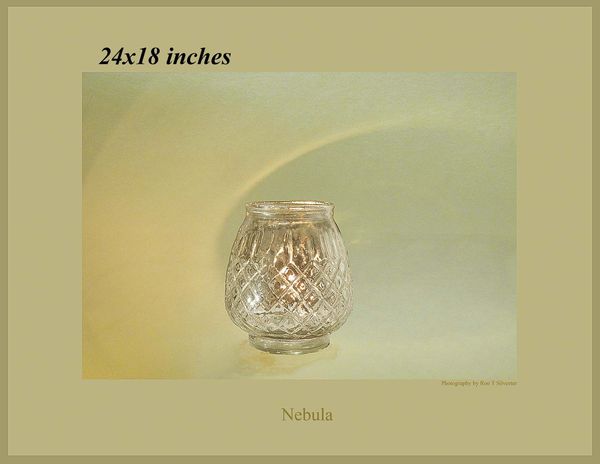
Studio shot
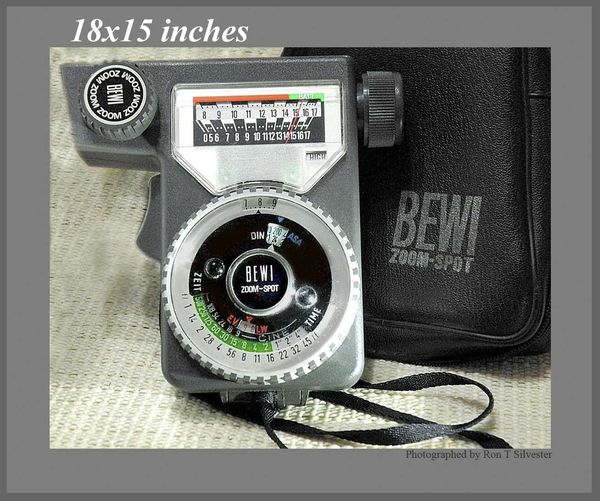
Snapshot

Oct 2, 2012 11:01:22 #
jerryc41 wrote:
How exactly does this work? I understand that Nikon FX cameras have a setting (or maybe it's automatic) that adjusts the camera for using a DX lens. What is the final result of using a DX rather than an FX lens of the same focal length?
4th set of three from rts2568
Out shopping
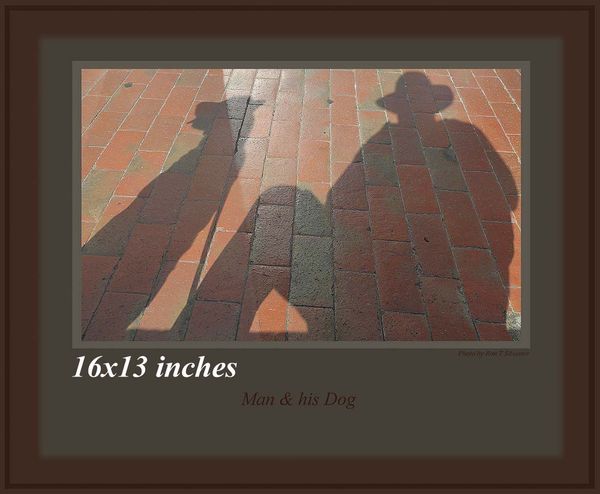
Hand held

In the rain
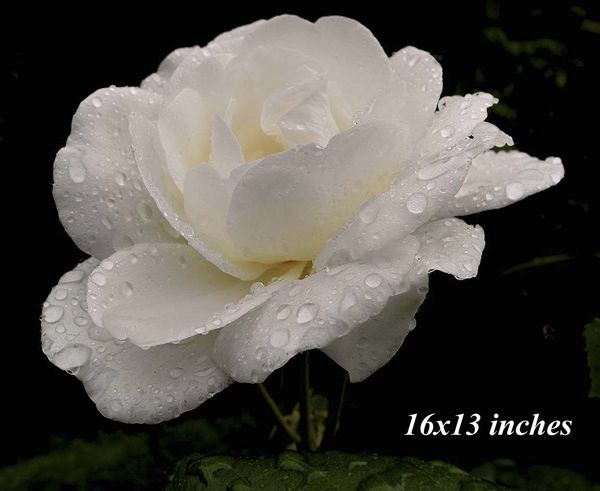
Oct 2, 2012 11:05:22 #
jerryc41 wrote:
How exactly does this work? I understand that Nikon FX cameras have a setting (or maybe it's automatic) that adjusts the camera for using a DX lens. What is the final result of using a DX rather than an FX lens of the same focal length?
Wow Jerryc41, you really have caught the imagination of the UHHers, more than enough here to answer your question and a lot more I suspect.
Final set of 3.
From rts2568
Out walking

So near but so far
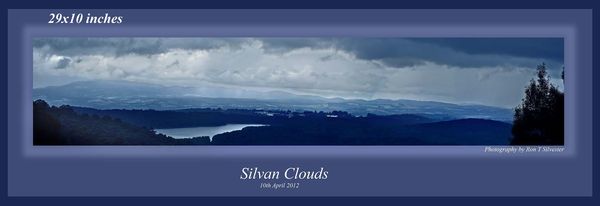
Read the text on this one Jerryc41
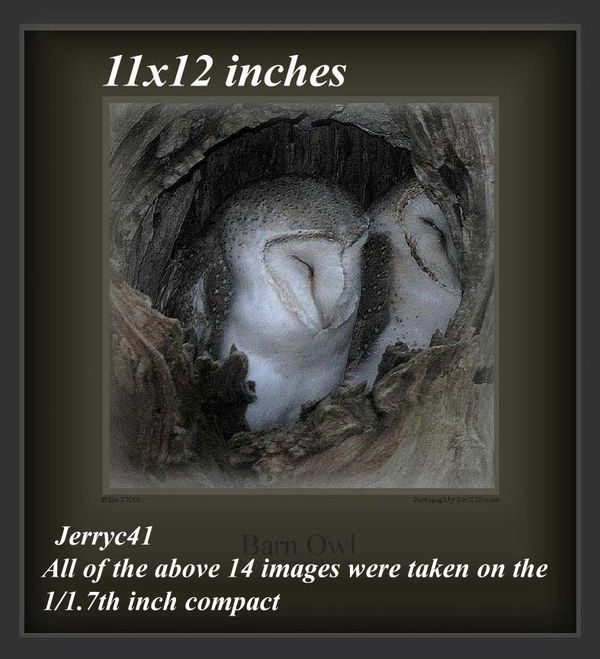
Oct 2, 2012 11:17:02 #
GoofyNewfie wrote:
quote=mcveed quote=Bram boy No your confused a 1... (show quote)
To GoofyNewfie
From rts2568
Thank you for your sound and proper advice.
rts2568
Oct 2, 2012 11:18:48 #
rts2568 wrote:
Wow Jerryc41, you really have caught the imagination of the UHHers, more than enough here to answer your question and a lot more I suspect.
Final set of 3.
From rts2568
Final set of 3.
From rts2568
Ummm, only seven pages of information. I was hoping for a bit more.
Seriously, thanks, everyone, for these explanations. I understand now. :thumbup:
Oct 2, 2012 11:34:29 #
mcveed wrote:
There is no such thing as a 10mm DX lens. A 10mm lens is a 10mm lens - period.
Right. I was just using that as an example of how the apparent focal length would change. Easy math: 10 X 1.5 = 15
Oct 2, 2012 12:28:04 #
jerryc41 wrote:
How exactly does this work? I understand that Nikon FX cameras have a setting (or maybe it's automatic) that adjusts the camera for using a DX lens. What is the final result of using a DX rather than an FX lens of the same focal length?
From rts2568
Hi Jerryc41 again. I've just been reading some of the replies you've had and there are some excellent submissions but I am very disappointed with the carelessness and misleading information given by some. Before I submit a rider to my previous where you could easily be misguided by some of the replies, can I ask that you tell us what your actual plans are?
Do you have a Nikon FX camera, or aim to get one?
Do you have a DX Nikon camera? If so do you intend to sell or keep it?
Do you have DX NIKON NIKKOR lens or lenses or intending to get some?
Do you have Non NIKON NIKKOR DX lenses, Vivitar, Tamrom, Sigma or etc?
rts2568
Oct 2, 2012 12:52:37 #
rts2568 wrote:
quote=jerryc41 How exactly does this work? I und... (show quote)
After some buying and selling, I've settled on a pair of D7000's. I have several Nikon DX lenses and the Nikon FX 105mm Micro. Although I'd like the get the Magic Trio - http://www.nikonguides.com/triolens.html - spending over $6,000 on lenses is not in my future. I'll stick with what I have - for now.
Some day I might get an FX body, and I was wondering how my DX lenses would work with that. I'm glad to hear that they would be usable - although not ideal.
If I were to get an FX body and sell the DX, I'd also sell the lenses and start buying FX lenses. I just love seeing that UPS truck arriving. :D
Oct 2, 2012 14:35:15 #
Bram boy
Loc: Vancouver Island B.C. Canada
HarryBinNC wrote:
quote=Bram boy Shure it works but the whole point... (show quote)
If you want to reply, then register here. Registration is free and your account is created instantly, so you can post right away.
